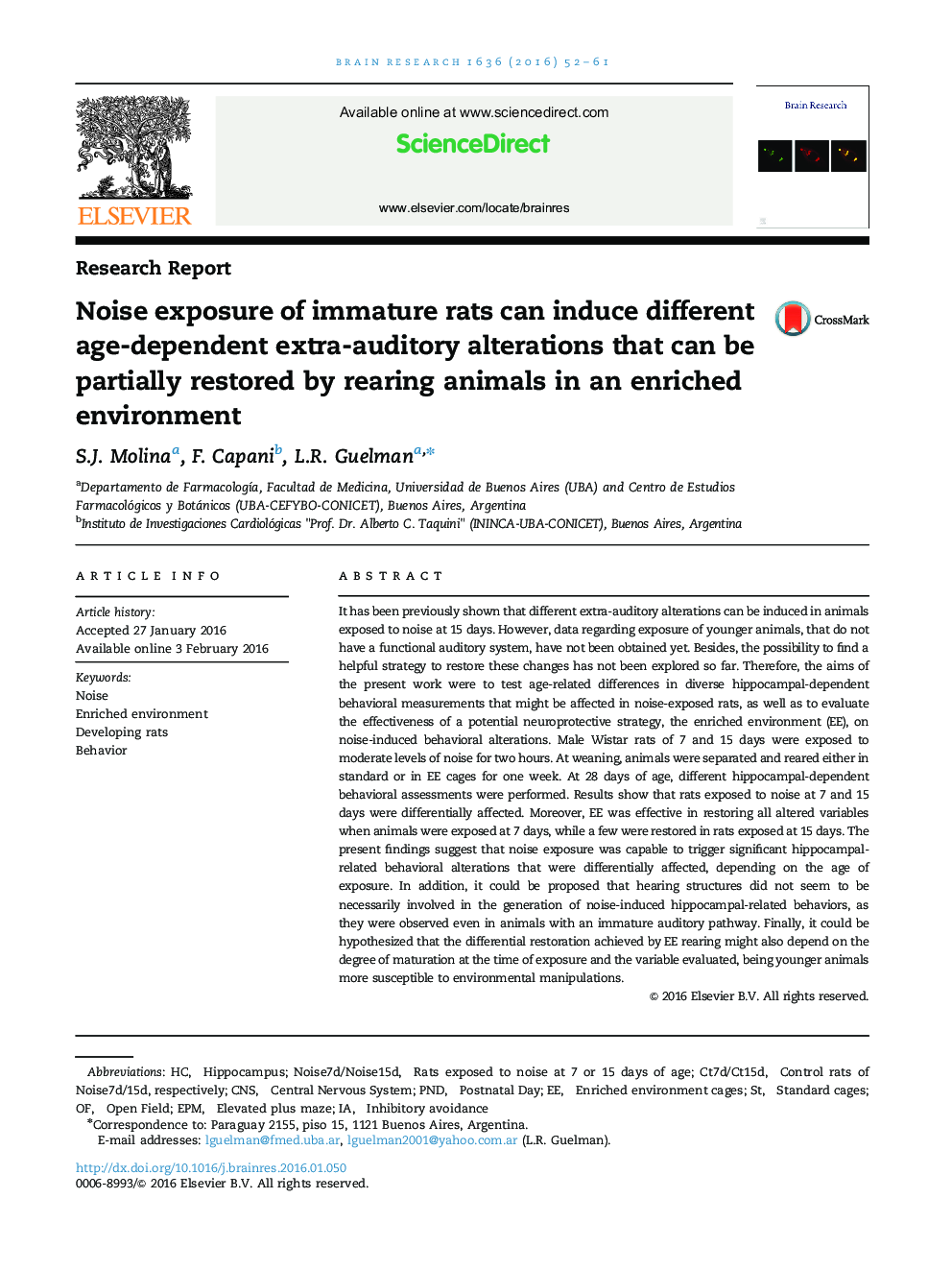| Article ID | Journal | Published Year | Pages | File Type |
|---|---|---|---|---|
| 6262554 | Brain Research | 2016 | 10 Pages |
â¢Noise-induced behavioral changes are age-dependent.â¢Enriched environment is effective in restoring some noise-induced behavioral changes.â¢Noise impacts on Central Nervous System through indirect and direct ways.
It has been previously shown that different extra-auditory alterations can be induced in animals exposed to noise at 15 days. However, data regarding exposure of younger animals, that do not have a functional auditory system, have not been obtained yet. Besides, the possibility to find a helpful strategy to restore these changes has not been explored so far. Therefore, the aims of the present work were to test age-related differences in diverse hippocampal-dependent behavioral measurements that might be affected in noise-exposed rats, as well as to evaluate the effectiveness of a potential neuroprotective strategy, the enriched environment (EE), on noise-induced behavioral alterations. Male Wistar rats of 7 and 15 days were exposed to moderate levels of noise for two hours. At weaning, animals were separated and reared either in standard or in EE cages for one week. At 28 days of age, different hippocampal-dependent behavioral assessments were performed. Results show that rats exposed to noise at 7 and 15 days were differentially affected. Moreover, EE was effective in restoring all altered variables when animals were exposed at 7 days, while a few were restored in rats exposed at 15 days. The present findings suggest that noise exposure was capable to trigger significant hippocampal-related behavioral alterations that were differentially affected, depending on the age of exposure. In addition, it could be proposed that hearing structures did not seem to be necessarily involved in the generation of noise-induced hippocampal-related behaviors, as they were observed even in animals with an immature auditory pathway. Finally, it could be hypothesized that the differential restoration achieved by EE rearing might also depend on the degree of maturation at the time of exposure and the variable evaluated, being younger animals more susceptible to environmental manipulations.
